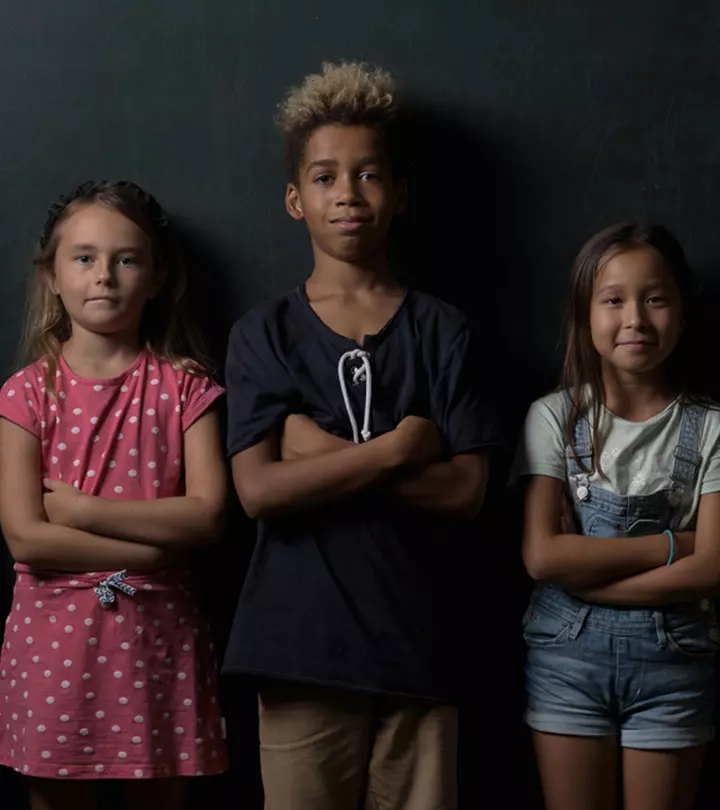
Image: Shutterstock
In the ever-evolving industry of children’s entertainment and literature, the call for diverse characters is growing louder and more urgent. From books to movies to television shows, proper representation matters. It matters not only for children from underrepresented backgrounds but for all kids. In this article, we’ll explore why it’s crucial for children to see diverse characters and how this simple yet powerful shift can shape their perceptions, beliefs, and ultimately, the world they inhabit. Read on to know more!
1. Representation Starts At Home
As a parent or caregiver, you play a pivotal role in shaping your child’s worldview. When you expose your kids to a wide range of diverse characters from an early age, you’re fostering a sense of inclusivity and acceptance. Children are like sponges, soaking up information and forming opinions. By presenting them with diverse characters, you’re setting the foundation for a future where they value and celebrate differences.
2. Representation Is More Than An Acknowledgment Of Existence
It’s not enough to merely include diverse characters in children’s media. True representation goes beyond tokenism. It involves giving diverse characters depth, complexity, and authentic stories that reflect their experiences. When kids see characters that look like them or come from backgrounds different from their own, it sends the powerful message that their stories are worth telling and that their lives are valuable.
3. Check Your Social Circle
Image: Shutterstock
Take a moment to reflect on your own social circle. Is it diverse? Are your child’s interactions limited to people who look, think, and behave like them? Exposure to diversity outside of the media is equally important. Engaging with individuals from various backgrounds enriches your child’s understanding of the world and cultivates empathy. Encourage playdates, community events, and friendships that introduce your child to different cultures, languages, and traditions.
4. Representation Normalizes Diversity
When children are consistently exposed to diverse characters, it becomes the norm for them. They don’t grow up viewing differences as something unusual or other. This normalization of diversity carries forward into their adult lives, influencing their interactions, relationships, and even career choices. By integrating diverse characters into their entertainment, you’re setting the stage for a future where diversity is embraced without hesitation.
5. Representation Aids In Dismantling Bias
Children are not born with biases; these biases are learned from their environment. By presenting them with diverse characters and stories that challenge stereotypes, you’re actively combating the development of harmful biases. When kids see characters from different backgrounds thriving, collaborating, and problem-solving together, it disrupts preconceived notions and fosters a mindset of equality and unity.
6. Check Your Bias & Do The Work
Image: Shutterstock
It’s essential to acknowledge your own biases and be willing to do the work to overcome them. We all carry biases, whether conscious or unconscious, shaped by societal influences. Take a critical look at the media your child consumes. Are the characters mostly homogeneous? Are stereotypes perpetuated? Challenge yourself to seek out media that authentically represents a variety of cultures, abilities, genders, and experiences.
Engage in open conversations with your child about the importance of diversity and representation. Encourage them to ask questions, and be prepared to answer honestly. If you’re unsure about a topic, take the time to educate yourself together. The journey toward understanding and appreciating diversity is ongoing, and it requires active participation.
7. Fostering Cultural Curiosity
In a world that is increasingly interconnected, fostering cultural curiosity is an invaluable gift you can give to your child. Exposing them to diverse characters not only broadens their understanding of different cultures but also nurtures a genuine interest in learning about the world. When children see characters engaging in cultural practices, speaking different languages, or celebrating unique holidays, it piques their curiosity and encourages them to ask questions. This curiosity-driven exploration lays the foundation for a generation that seeks to learn from and about each other, creating a more harmonious and interconnected global community.
8. Empowering Underrepresented Voices
Image: Shutterstock
Representation transcends appearances, wielding the transformative ability to amplify marginalized voices and stories. By featuring diverse characters in leadership, strength, and innovation, you empower children to envision attainable roles. Characters from similar backgrounds conquering obstacles and attaining triumphs instill pride, possibility, and determination. This empowerment molds aspirations and aids in dismantling generations-old systemic barriers.
In our connected world, guiding children to embrace diversity is crucial. Exposing them to various characters fosters empathy, broadens horizons, and highlights the value of every individual in our global community.
When curating your child’s media, remember each story and interaction shapes their worldview. Inclusive representation molds young minds, fostering empathy and paving the way for a future of tolerance and unity. Let’s ensure the tales we share mirror the diverse world they’ll explore. Let us know in the comments your views on introducing your kids to inclusivity!















